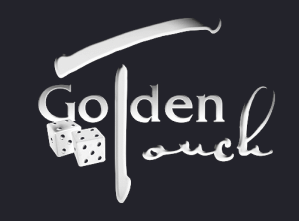
Golden Touch Craps
Here is a set of posts I wrote on the private members-only area of the GTC website. They continue the discussion of the 5-count along with some new themes that are introduced. Each subject can be viewed independently. But when combined together they form a three part series.
They are slightly technical in nature as they relate to the math of the game and the technique of controlled shooting. Yet, if one does not understand the precise subject matter offered, the arguments displayed will still be clear to the layman.
The first article is a response to the subject of "Charting." Charting is a concept some supposed "experts" fallaciously think can be applied to the game of craps. They think they can predict which numbers are likely to be thrown or when a table is going to be hot based on what numbers have been thrown in the past. I refer to this first article as "the law of large numbers" I am presenting in this three part series.
The second article is a response to an individual who tried to say that one of the methods of play (the 5-Count) recommended by Golden Touch Craps (the organization teaching controlled shooting) is a form of charting. I refer to this as "the 5-count is not a charting method" in the article I am presenting in this three part series.
In the third article I bring together some of the concepts presented in the first two posts. It references an interesting article written by mathematician, Dr. Don Catlin. In it he discusses some of the research he has done on these topics. I use his article to make the point of how my articles concur with what Dr. Catlin has presented in his article.
Part One: The law of large numbers
Part Two: The 5-count is not a charting method!
Part Three: Bringing it All Together
In a post on our private members-only message board, I referred to a letter written by Dr. Don Catlin. In that letter he discusses sample size and the number of rolls needed to predict probabilities within a certain range of accuracy.
Speaking of the letter I said, "This is terrific work. It gives me the data I need to clarify some of the points I was trying to make on a previous thread back in June."
Another way of stating what Dr. Catlin showed mathematically is as follows:
If one were to bet the pass line 3,840,831 times on random shooters, you could expect to lose between 1.314% to 1.514% of your money 95% of the time.
Notice the problem stated hands, not rolls. We can estimate how long it would take to play this many hands. Let us say it takes 7 rolls to have a decision on our pass line bet and 60 rolls per hour are made at the table. It would take a person over 51 years to make that many bets, playing continuously with no breaks whatsoever. I guess you could add a come bet at every opportunity and that would reduce it to somewhere between 7 and 8 years.
This is another way of looking at the point I was making when I wrote about
the law of large numbers in part one of this series of articles. One has to be careful when looking at empirical data to try to draw conclusions.
The other item Dr. Catlin mentioned was the 5-Count. At the beginning of his letter Dr. Catlin wrote,
"I'm happy that you have had such good luck with the 5-Count. You should realize, however, that as I showed and Frank has openly reiterated, unless you are using a controlled shot, or some other player at the table is using a controlled shot, your expected result will be a 1.414 % loss of your Pass Line wagers (the odds are even money). The 5 count simply reduces the number of such wagers in a given time period."
He is not predicting whether you will win or not, whether the table will be hot or cold, whether there will be a long roll or not. It is reducing the number of bets you make while at the table. It is not trying to predict the future from what has occurred in the past. This is the point I was making in my "The 5-Count is not a Charting Method" article.
Of course, while the 5-Count is not predicting the future, it is saving you money 100% of the time on those shooters who seven out before completing the 5 count. Since it has been proven mathematically that 57% of the random rolls are eliminated by the 5-Count, you are saving money by not betting on approximately 57% of the random rolls. Furthermore you are not betting on those that do not have a long roll since by definition a long roll must go beyond the 5-Count.
GTC teaches us to be advantage players by giving us the tools we need to accomplish that objective. Clearly the 5-Count is one of those superior tools.


